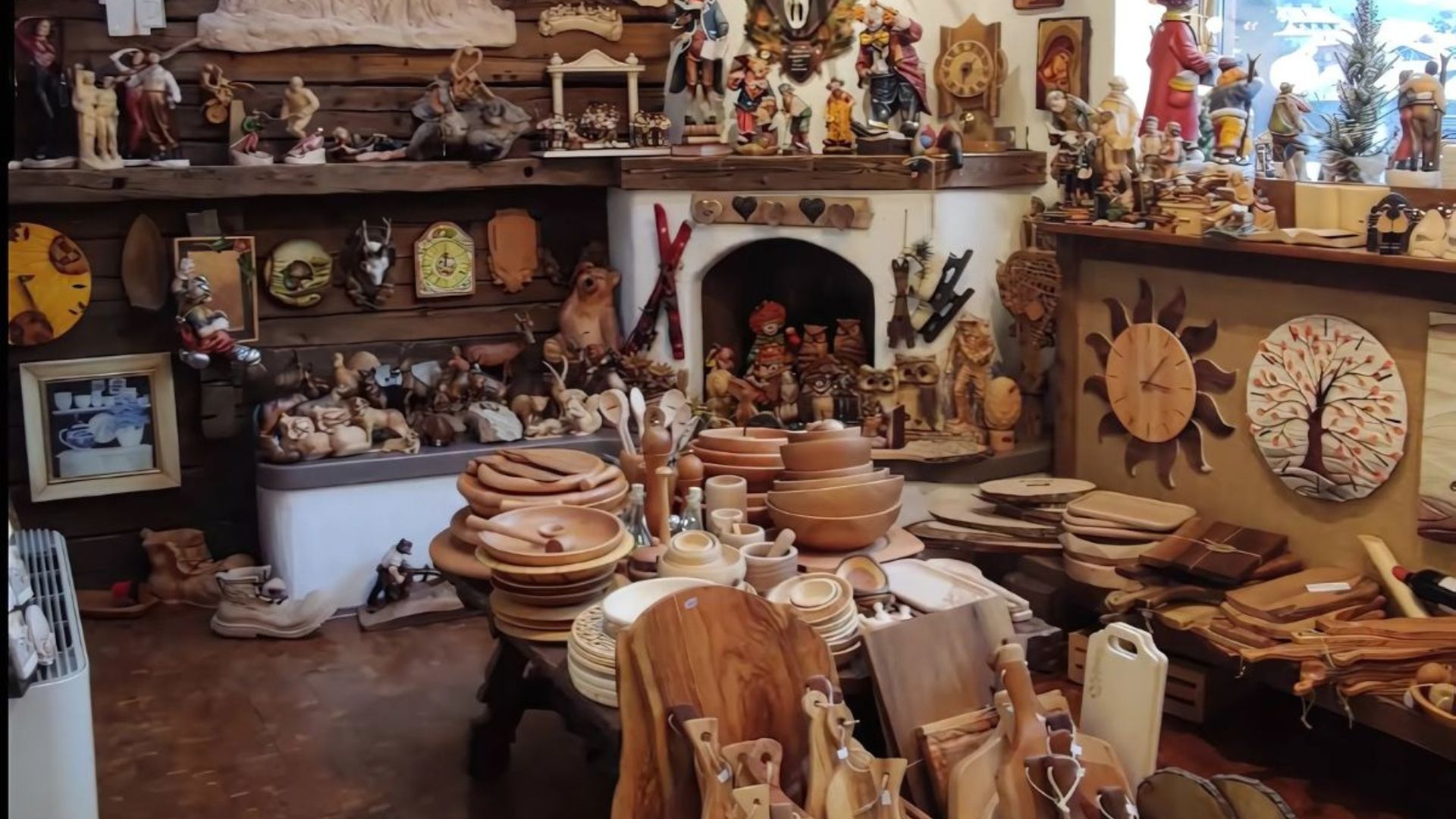Nestled in the heart of the Dolomites, Ortisei captured my attention with its remarkable woodcarving heritage long before I set foot in this charming South Tyrolean town. Walking through the streets, I was amazed to discover that this artistic tradition dates back to the 17th century.
When I visited, I watched in awe as craftsmen transformed simple blocks of wood into intricate works of art. Their hands moved with precision learned from ancestors who practiced the same techniques centuries ago.
The woodcarving tradition of Ortisei represents more than just a craft—it’s the artistic soul of Val Gardena that has been carefully preserved through generations of skilled artisans.
During my visit, I watched in awe as craftsmen transformed simple blocks of wood into intricate works of art. Their hands moved with precision learned from ancestors who practiced the same techniques centuries ago.
What makes Ortisei truly special is the opportunity to witness this living tradition firsthand. The workshops throughout town welcome visitors to observe as artisans work, offering a rare glimpse into a cultural practice that has shaped the identity of this Alpine community.
I found myself lingering for hours, mesmerized by the transformation taking place before my eyes, and couldn’t resist bringing home a small carved piece as a tangible memory of this extraordinary artistic heritage.
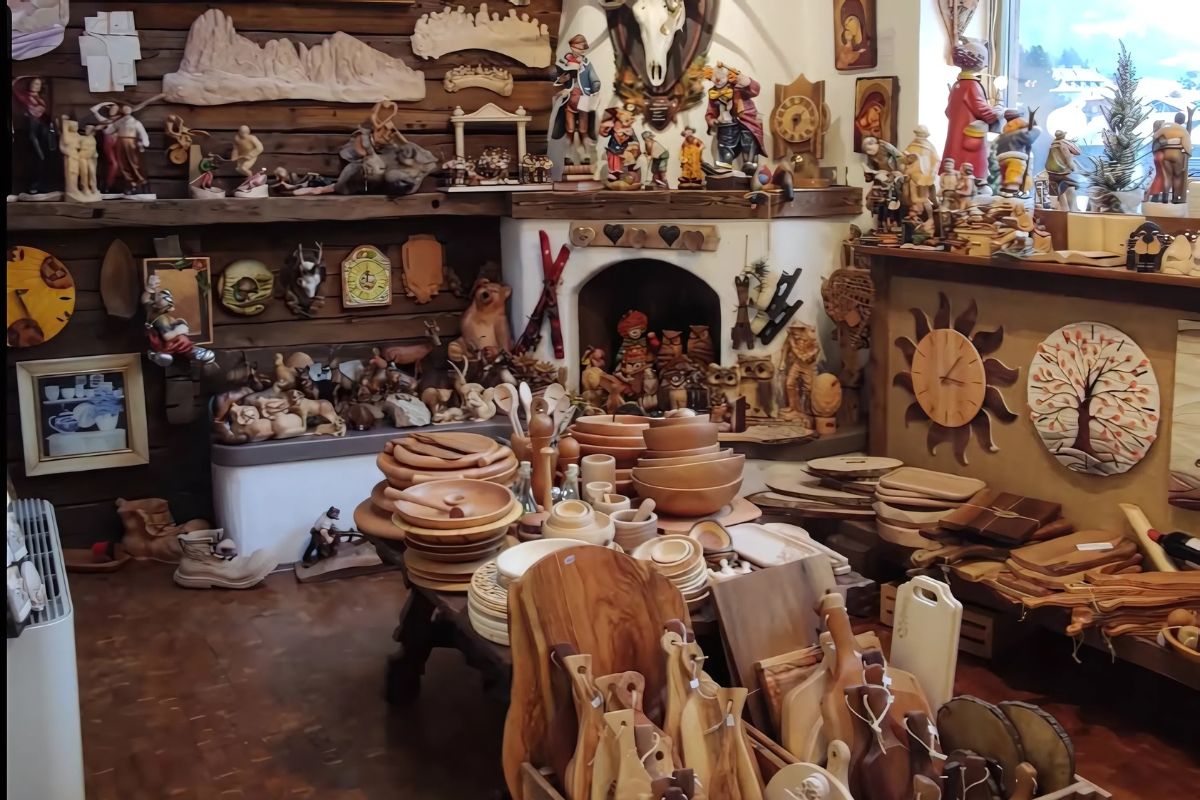
The Heart of Ortisei’s Woodcarving Heritage
Nestled in the beautiful Dolomites, Ortisei’s woodcarving tradition spans over 300 years and represents the soul of Val Gardena. Local artisans transform stone pine into everything from small figurines to life-size sculptures, often featuring religious themes.
Historical Development of Woodcarving in Ortisei
The woodcarving tradition in Ortisei dates back to the early 17th century. When I visited this charming town, locals explained how the craft began as a way for farmers to supplement their income during the long winter months.
The isolation of Val Gardena during winter created perfect conditions for developing this specialized skill. Families would gather around the stove, carving religious figures that traveling merchants would later sell across Europe.
By the 19th century, formal woodcarving schools opened in Ortisei, helping standardize techniques and preserve traditions. The art flourished as demand for religious sculptures grew throughout the Catholic world.
Today, authentic hand-carved pieces from Val Gardena carry a special trademark, guaranteeing their origin and quality. The tradition continues to thrive despite modern pressures.
Iconic Woodcarving Artists and Studios
Walking through Ortisei, I discovered numerous family workshops where master carvers create stunning pieces. Franco Comploj stands among the most respected artists, known for his religious sculptures that honor centuries-old techniques.
Many studios welcome visitors, offering a glimpse into their creative process. I watched in awe as skilled hands transformed simple blocks of wood into expressive faces and flowing garments.
The Comploj family workshop, operating for generations, showcases how woodcarving knowledge passes from parent to child. Other notable studios include:
- Senoner Sculptures: Known for their detailed nativity scenes
- Perathoner Workshop: Famous for religious figures with realistic expressions
- Mussner G. Vincenzo: Specializes in baroque-style angels and saints
These artists blend traditional methods with personal creativity, ensuring Ortisei’s woodcarving heritage remains vibrant and evolving.
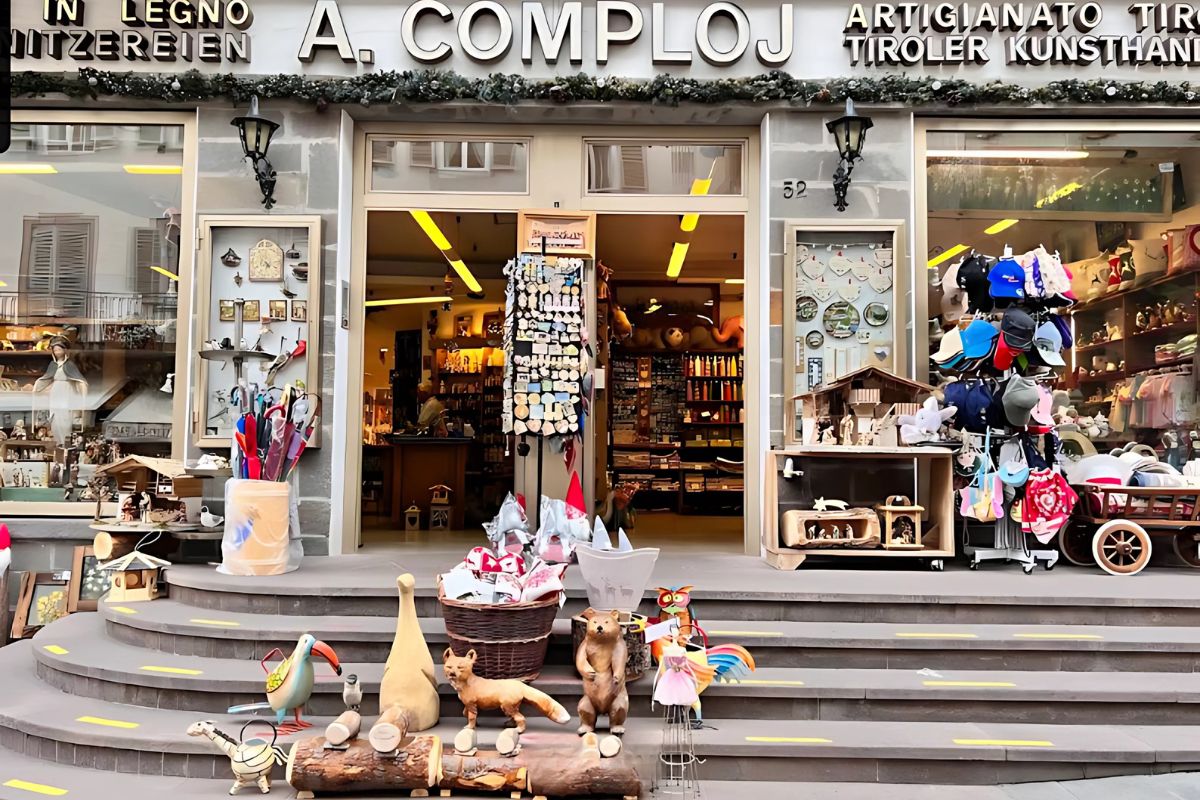
Exploring the Art of Wood Sculpture
Wood sculpture in Val Gardena blends centuries-old traditions with modern artistic expression. The artisans of Ortisei transform simple timber into breathtaking works that capture the region’s cultural identity.
Techniques and Tools of the Trade
When I visited the workshops of Ortisei, I was amazed by the array of specialized tools craftspeople use. Each wood carver typically owns between 200-300 different chisels, gouges, and mallets, each serving a specific purpose.
The most skilled artisans use a technique called “relief carving,” where they create dimensional scenes that seem to emerge from flat wooden panels. Another popular method is “in-the-round” carving, producing fully three-dimensional figures.
Many sculptors still follow traditional methods passed down through generations. Some use “roughing out” techniques with larger tools before switching to fine detailing tools for the finishing touches.

The Process from Tree to Artistry
The journey begins with selecting the right wood. Swiss pine (cirmolo) is most prized in Val Gardena for its soft texture and pleasant aroma. I watched craftspeople carefully evaluate wood grain and natural characteristics before beginning.
The transformation process typically starts with a sketch or small clay model. Master carvers then transfer these designs to wood blocks using measuring tools and reference points.
Some life-size sculptures require months of dedicated work. I was fascinated watching artisans remove excess wood gradually, revealing the form hidden within. The most delicate features—like facial expressions on religious figures—come last.
After carving, many pieces undergo hand-sanding followed by finishing with natural oils or paints. Some artisans still use traditional painting techniques for religious pieces that maintain centuries-old color palettes and decorative patterns.

Ortisei’s Religious Significance Through Wood
The tradition of woodcarving in Ortisei has deep religious roots that date back to the 17th century. Walking through this charming town in Val Gardena, I’m always struck by how faith and artistry blend seamlessly in the detailed wooden sculptures found in churches, homes, and workshops.
Sacred Figures and Altarpieces
In Ortisei, skilled craftspeople transform simple wood into profound expressions of faith. I’ve spent hours admiring the intricate altarpieces that adorn local churches, each telling biblical stories through detailed carvings.
The Holy Family is a popular theme, with artisans paying special attention to the gentle expressions of the Virgin Mary and tender portrayal of Jesus. These pieces aren’t just decorative—they’re spiritual tools that have connected generations of worshippers to their faith.
Many workshops still use traditional techniques passed down for centuries. When I visit, I’m fascinated watching carvers create Risen Christ figures and scenes of Jesus with Children that capture both divine majesty and human warmth.
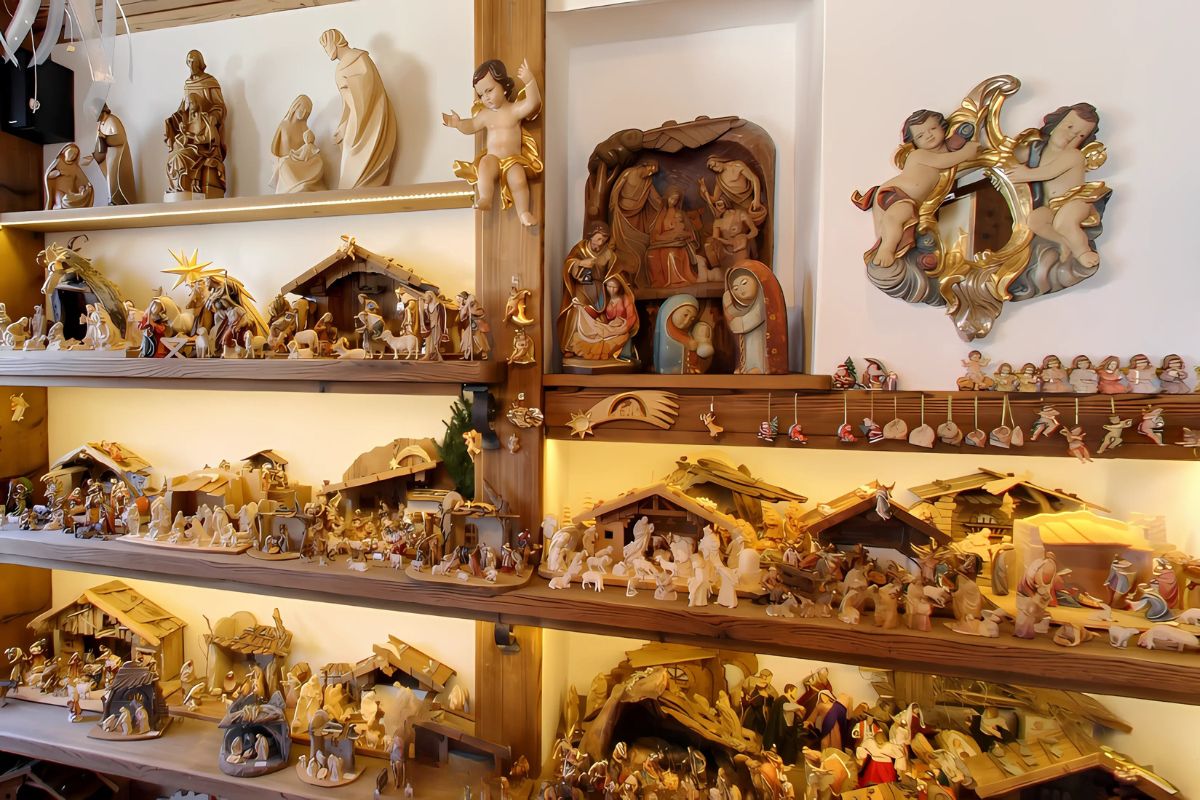
The Role of Patrons: Saint Joseph and Saint Mary
Saint Joseph holds a special place in Ortisei’s woodcarving tradition. As the patron saint of carpenters, he’s often featured prominently in local sacred art.
I’ve learned that many workshops display his image for inspiration and protection. The craftspeople tell me they feel a connection to him while working with wood—the same material he used in his carpentry.
The Mother of God appears frequently too, carved with remarkable detail in her role as protector and nurturer. Local artisans show me how they carefully render her robes and facial expressions to convey serenity and compassion.
Annual festivals honor these patron saints, where the community’s best religious carvings are displayed. It’s a beautiful marriage of faith and artistic excellence that continues to define Ortisei’s cultural identity.
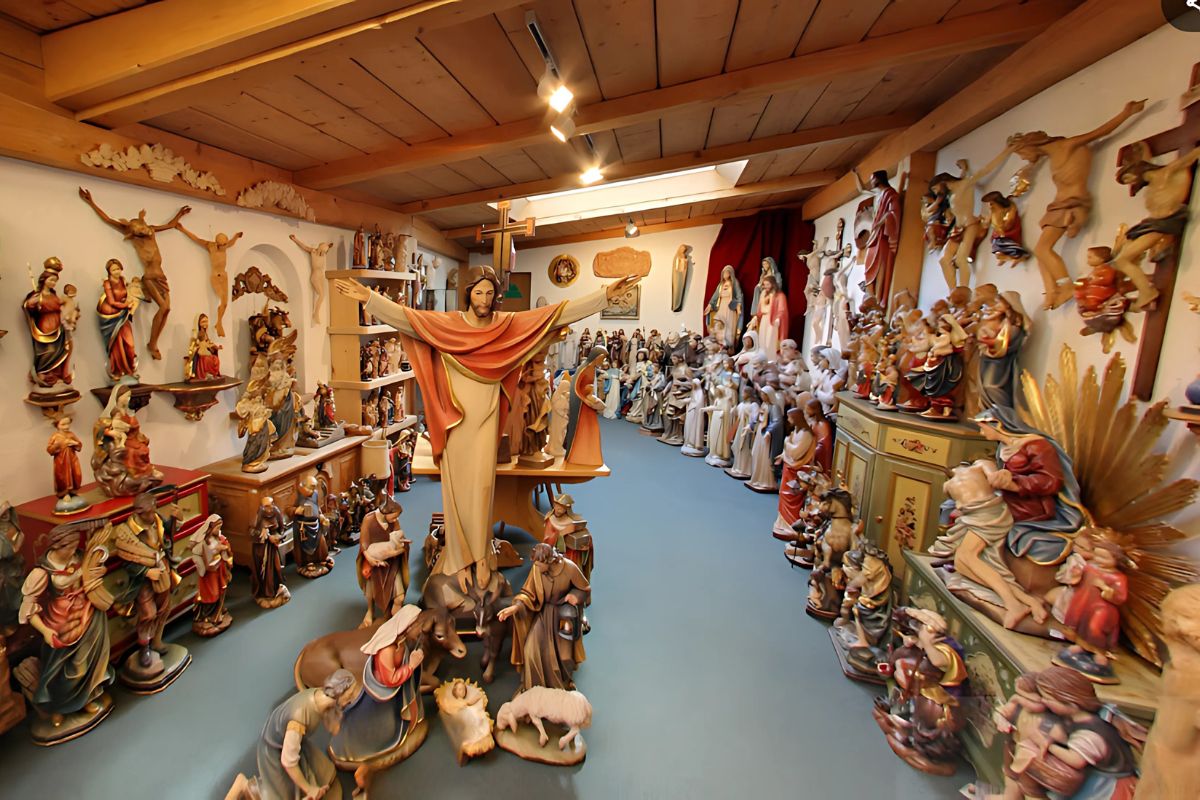
Nurturing the Next Generation of Carvers
The woodcarving tradition in Ortisei continues to thrive through dedicated education programs and recognition of emerging talent. Local institutions play a vital role in passing down centuries-old techniques while encouraging innovative approaches that keep this cultural heritage relevant.
Educational Institutions and Apprenticeships
I visited several woodcarving schools during my time in Ortisei, where young artisans learn this time-honored craft. The Art Institute of Val Gardena stands as the cornerstone of formal woodcarving education, offering comprehensive programs that combine traditional techniques with contemporary design principles.
What impressed me most was the apprenticeship system. Young carvers work alongside master artisans in small workshops, learning through hands-on experience. This mentorship approach has remained largely unchanged for generations.
The Design Center in Ortisei also offers shorter introductory courses for visitors. I participated in a relief carving class where even beginners could create simple pieces under expert supervision. These workshops provide a taste of the craft’s complexity while preserving its accessibility.

Contemporary Artists and Recognition
Peter Demetz represents the new generation of Ortisei woodcarvers. His hyperrealistic human figures blend traditional techniques with a modern artistic vision. As a result, he has achieved international acclaim and earned prestigious exhibitions worldwide.
The annual Val Gardena Art Prize spotlights emerging talent. Winners receive financial support and exhibition opportunities. I attended last year’s ceremony and was amazed by the innovation displayed while honoring traditional roots.
Young carvers increasingly incorporate sustainability practices. They use locally sourced timber and natural finishing materials. Many also combine woodcarving with other media or digital design tools. As a result, they create fusion pieces that appeal to contemporary art collectors.
The recognition extends beyond trophies. Several local artists have won international awards. This has brought global attention to Ortisei’s continuing legacy as a woodcarving center.

